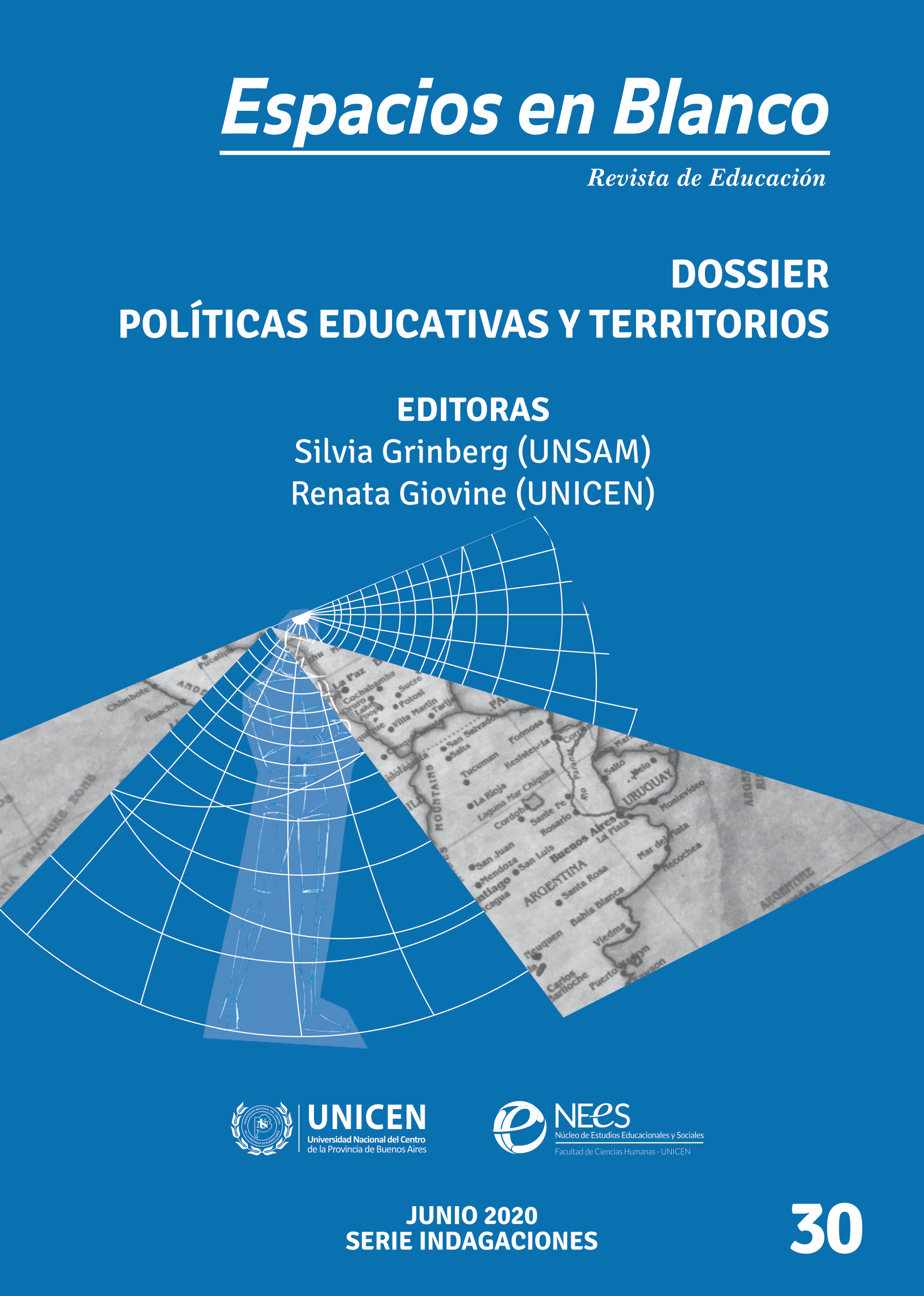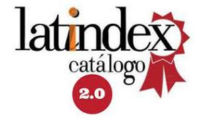Desafíos del sistema educativo frente al abuso sexual en la infancia
DOI:
https://doi.org/10.37177/UNICEN/EB30-262Palabras clave:
Abuso Sexual en la Infancia (ASI), Institución educativa, prevención, detección, docentesResumen
El presente trabajo considera el Abuso Sexual en la Infancia (ASI) como una compleja problemática frente a la cual la institución educativa constituye un espacio primordial para llevar a cabo estrategias de prevención y detección.
Partiendo de una revisión sobre la conceptualización del ASI y los obstáculos que manifiestan los docentes para su abordaje, nos introducimos en la detección del abuso a través del relato de las víctimas, de los indicadores psíquicos y físicos. Asimismo, se señalan posibilidades de intervención en el marco educativo y de prevención vinculadas a la formación docente y programas de educación afectivo-sexual.
De cara a un abordaje corresponsable para la prevención, detección e intervención del ASI, es imperativa la necesidad de construir canales de comunicación y un trabajo articulado entre el sistema educativo y otros organismos que se ocupen de la defensa de los derechos de niños, niñas y adolescentes (NNyA).
Citas
Babatsikos, G. (2010). Parents’ Knowledge, Attitudes and Practices about Preventing Child Sexual Abuse: A Literature Review. Child Abuse Review, 19, 107–129.
Berlinerblau, V. (2016). Abuso sexual contra niños, niñas y adolescentes: Una guía para tomar acciones y proteger sus derechos. Argentina: Fondo de las Naciones Unidas para la infancia (UNICEF). Recuperado de www.unicef.org.ar.
Calvi, B. (2012). Abuso sexual en la infancia: efectos psíquicos. Buenos Aires: Lugar editorial S.A.
Carrique V., Llanos M.A., Moons M., Nogales C. C. (2015). Evaluación de acciones de capacitación del programa nacional de educación sexual integral. Salta: Ministerio de Educación.
Children’s Bureau (2013). The Children’s Bureau Legacy: ensuring the right to childhood. United State of America: Children’s Bureau, U.S. Department of Health & Human Services.
Committee for Children (2001). Talking About Touching: a personal safety curriculum. Preschool/Kindergarten (ages 4-6). Third edition. Teacher´s Guide. United State of America: Committee for Children.
Cromer L. M. & Goldsmith R. E. (2010). Child sexual abuse myths: Attitudes, Beliefs and individual differences. Journal of Child Sexual Abuse, 19, 618 – 647.
Davis M. K. & Gidycz C. A. (2000). Child sexual abuse prevention programs: a meta-analysis. Journal of Clinical Child Psychology, 29, 257-265.
Faur E., Gogna M. Binstock G. (2015). La educación sexual integral en la Argentina: Balances y desafíos de la implementación de la ley (2008-2015). Buenos Aires: Ministerio de Educación.
Finkelhor, D. (1993). Epidemiological factors in the clinical identification of child sexual abuse. Child Abuse & Neglect, 17, 67–70.
Finkelhor, D. (1994). Current Information on the scope and nature of child sexual abuse. The Future of Children, 4 (2), 31-53.
Finkelhor, D. (2009). The prevention of childhood sexual abuse. The Future of Children, 19 (2), 169-194.
Finkelhor D. & Douglas E. (2005). Childhood sexual abuse fact sheet. United State of America: Crimes against children research center & University of Hampshire. Recuperado de: http://unh.edu/ccrc/factsheet/pdf/childhoodSexualAbuseFactSheet.pdf
Fleming, J., Mullen, P., Bammer, G. (1997). A study of potential risk factors for sexual abuse in childhood. Child Abuse & Neglect, 21, 49–58.
Gardner, R. A. (1998). Rebuttal to K. Faller’s Article. Child Maltreatment, 3(4), 309–312.
Giberti, E. (2015). Abuso sexual contra niñas, niños y adolescentes: un daño horroroso que persiste al interior de las familias. Buenos Aires: Noveduc.
Gilgun J. F. & Gordon S. (1985). Sex education and the prevention of child sexual abuse. Journal of sex education and therapy, 11, 46-52.
Goldman J. D. G. (2007). Primary school student-teachers´ knowledge and understandings of child sexual abuse and its mandatory reporting. International Journal of Educational Research, 46, 368 – 381.
González-Torres M. C. (2003). Claves para favorecer la motivación de los profesores ante los retos educativos actuales. Estudios sobre educación, 5, 61-83.
Hébert M., Lavoie F., Piché C. & Poitras M. (2001). Proximate effect of child sexual abuse prevention program in elementary school children. Child Abuse & Neglect, 25, 505–522.
Horno Goicoechea P., Santos Náñez A., del Molino Alonso C. (2001). Abuso Sexual Infantil: Manual de formación para profesionales. Madrid: Save the Children & Ministerio de Trabajo y Asuntos Sociales.
The Internacional Center for Assault Prevention (2012). Evaluations of the curricula: CAP curriculum international evaluation/studies 1987 to 2007. Nueva Jersey: Camden County College.
Intebi I. (2008). Abuso sexual infantil: en las mejores familias. Buenos Aires: Granica.
Karayianni, E.; Kostas, A. F.; Diakidoy I.; Hadjicharalambous M. & Katsimicha E. (2017). Prevalence, contexts, and correlates of child sexual abuse in Cyprus. Child Abuse & Neglect, 66, 41–52.
Kenny, M. C. (2001). Child abuse reporting: teachers’ perceived deterrents. Child Abuse & Neglect, 25, 81–92.
Kenny, M. C. (2004). Teachers’ attitudes toward and knowledge of child maltreatment. Child Abuse & Neglect, 28(12), 1311–1319.
Kempe, C.H., Silverman F.N., Denver M.D., Cincinnati M.D., Steele B.F., Droegemueller W. (1985). The battered-child syndrome. Child Abuse & Neglect, 9, 143–154.
King, C. B. (2011). Understanding reports to child welfare from the education system: challenges and opportunities for supporting vulnerable children. Doctoral Thesis. Department of Human Development and Applied Psychology, University of Toronto, Canadá. Recuperado de: https://tspace.library.utoronto.ca/bitstream/1807/31808/6/King_Colin_B_201111_PhD_Thesis.pdf
Kumar M. T., Kumar S., Singh S.P. & Kar N. (2017). Prevalence of child abuse in school environment in Kerala, India: an ICAST-CI based survey. Child Abuse & Neglect, 70, 356–363.
Lange B. C., Condon E. M. & Gardner F. (2017). Child sexual abuse and subsequent maternal parenting: a qualitative synthesis. PROSPERO, CRD42017058761 Recuperado de: http://www.crd.york.ac.uk/PROSPERO/display_record.php?ID=CRD42017058761
Madak P. R. & Berg D. H. (1992). The prevention of Sexual Abuse: an evaluation of “Talking about Touching”. Canadian Journal of Counselling, 26, 29-40.
Mathews, B., Lee J. X., & Norman, R. E. (2016). Impact of a new mandatory reporting law on reporting and identification of child sexual abuse: A seven-year time trend analysis. Child Abuse & Neglect, 56, 62–79.
McKee B. E. & Dillenburger K. (2009). Child Abuse and Neglect: Training needs of student teachers. International Journal of Educational Research, 48, 320 – 330.
McKee B. E. & Dillenburger K. (2012). Effectiveness of child protection training for pre-service early childhood educators. International Journal of Educational Research, 53, 348 – 359.
Melkman E. P., Hershkowitz I., Zur R. (2017). Credibility assessment in child sexual abuse investigations: a descriptive analysis. Child Abuse & Neglect, 67, 76–85.
Moreno-Manso J. M., García-Baamonde E., Blazquez-Alonso M., Pozueco-Romero J. M. (2014). Application of a child abuse prevention programme in an educational context. Anales de psicología, 30, 1014-1024.
National Sexual Violence Resource Center (NSVRC) (2011). Child sexual abuse prevention: overview. United State of America: NSVRC.
National Sexual Violence Resource Center (NSVRC) (2012). Understanding child sexual abuse definitions and rates. United State of America: NSVRC.
Organización Mundial de la Salud (2016). Maltrato infantil. Recuperado de http://www.who.int/mediacentre/factsheets/fs150/es/
Quinteros A., y Calvete I. C. (2011). Técnicas para la detección y evaluación de abusos sexuales en menores. Valladolid: Asociación Aspacia.
Sylvester, L. (1997) Talking about touching: Personal Safety Curricula (1996 editions). Preschool to grade 3. Currículum Evaluation Summary. Seattle: Committee for Children.
Tanaka M., Suzuki Y. E., Ikuko A., Takaoka K., MacMillan H. L. (2017). Child sexual abuse in Japan: A systematic review and future directions. Child Abuse & Neglect, 66, 31–40.
Vaccaro S. y Barea C. (2009). El pretendido síndrome de alienación parental: un instrumento que perpetúa el maltrato y la violencia. Bilbao: Desclée de Brouwer.
Vainstein N., Fernández A. V., Padín C. Zito Lema V., Pinto G. & Duro E. (2013). Por qué, cuándo y cómo intervenir desde la escuela ante el abuso sexual en niños, niñas y adolescentes: guía conceptual. Argentina: Fondo de las Naciones Unidas para la Infancia (UNICEF). Recuperado de www.unicef.org.ar
Vlahović-Štetić V. & Vizek-Vidović V. (2012). Evaluation of the Project “Prevention of Child Abuse through the school system and local community – CAP. Zagreb: Faculty for philosophy in Zagreb. Department for psychology.
Volnovich J. R. (comp.) (2016). Abuso sexual en la infancia: el quehacer y la ética. Buenos Aires: Lumen Humanitas.



















